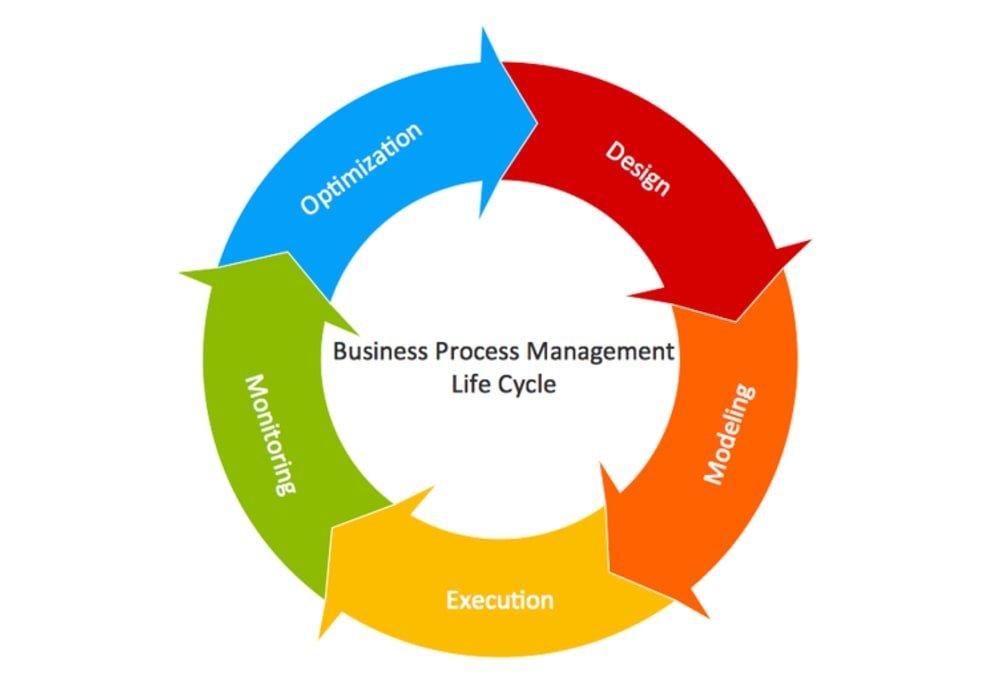Life Cycle Management
Product lifecycle management is all the processes, technologies, software and methods put in place to properly manage the life cycle of a product to improve their sustainability performance
The reduction of the time to market of a new product, the reduction of the design costs, the excellence in quality, require the company to obtain competitive advantages in the management of the life cycle of a product. industrial.
In this context, the integration of customers, suppliers or partners in the value chain becomes a key success factor for the company.
A product generates a great deal of information during the different phases of its development and its marketing (its life cycle): definition, design, manufacture and maintenance.
Some products benefit from a longer maturity stage, others, some products even seem to stay mature indefinitely without experiencing a decline. This is the case with some big brands like Nutella or Coca Cola which have had a mature product for several decades now.
A product lifecycle management system (PLM) centralizes all this data within a common and secure space which guarantees the traceability of the data exchanged during the project. It allows all stakeholders in the development of a product to communicate and collaborate: design office, subcontractor, co-contractor, marketing department, etc.
Depending on the type of product, the different stages can be:
- the specifications for the product and / or associated services;
- the manufacturing method and the associated marketing method;
- the mode of distribution of the manufacturing;
- the possible intermediate storage method;
- the mode of distribution (speed and costs being two important elements);
- the service provided to the end customer in relation to their expectations;
- any changes to the product (update, improvement, etc.);
the end of the product’s life and its possible replacement.
What is Life Cycle Management in Pharma?
Pharmaceutical lifecycle management (LCM) is the process of managing the entire lifecycle of a product including its research, design and manufacture, service and disposal. Companies risk losing up to 90% of the revenue of some of their biggest products to generic and biosimilar competition.
Steps in Application Lifecycle Management
LCM offers a wider visibility into the development process. Since the process is fully integrated, you know where you are and what remains to be done, how long each task is taking, what tests have been done, and more.
Governance
Governance describes the decisions made about an application. When you start the process of building an app, you start with the original idea, but you also need to consider how it serves business goals and needs.
From this analysis, follow the requirements applicable to the new application, which must be defined and accepted at the governance stage.
Application governance also includes the management of resources, data and security, and user access.
Standardizing these processes helps automate governance and, as a result, accelerate application distribution.
Development
When the requirements have been established and accepted for the application or update, development can begin. Teams that follow the agile method for development can build and deploy applications or updates once or several times a day.
The design, creation, testing and deployment of the application can be considered as stages of the development phase.
Tests
Once developed, the application should be tested and bugs fixed before going into production.
The testing phase should be conducted concurrently with development. Feedback should be fed back to the development team on an ongoing basis.
Continuous integration should be included in the development process to avoid any conflict between these frequent updates.
The objective of the testing phase is to ensure that the application meets the requirements raised by governance and operates as intended before being made available to users.
Operation and maintenance
After testing and the identified bugs have been resolved, the application can be deployed.
The operations and maintenance phase extends the LCM approach to the entire application lifecycle. Indeed, the operation does not stop when the application is deployed. Maintenance operations and regular updates should be considered.
The withdrawal of an application or a service must also be considered as maintenance operations. Thus, it is advisable to define when the application will no longer be supported or when a new version will be available.
Application lifecycle management tools
LCM tools work as project management tools that allow you to bring teams and processes together. Look for a tool that integrates version control, real-time collaboration, requirements management, project estimation and planning, source code management, and test management.
You may find a tool that bundles all the functions you need, or you may need to integrate it with other solutions (development, for example). The LCM tool you choose will also need to support your development process, whether it’s agile, cascading, DevOps, or whatever.
Examples of LCM tools:
Atlassian Jira
IBM LCM Solutions
CA Agile Central
Microsoft Azure DevOps Server
Tuleap
Basecamp
What are the 5 stages of the product life cycle?
THE 5 STAGES OF A PRODUCT’S LIFE CYCLE
The life cycle of a product follows the following 5 stages:
Prototype. The product is in development, in gestation, the costs are important and the profitability of the product is zero. During this stage the product represents a loss for the company.
Launch. The product arrives in the market, the costs of promoting and producing the product do not allow it to be profitable.
Growth. At this point in its life cycle, the product becomes profitable for the business through economies of scale. The product is starting to gain market share, the objective being to maintain this stage of growth as long as possible, in particular by playing on the elements of the marketing mix.
Maturity. The product is no longer growing, it is neither gaining nor losing market share. Profitability is strong but it is stagnating. Production costs are low because the process is controlled. However, it is imperative to continue promoting the product, the costs of which cannot be reduced, as it guarantees the longevity of this product.
At this stage of the product life cycle, the company has every interest in investing in new products by injecting the profits linked to the profitability of the mature product into innovation.
Decline. The product is at the end of its life, its market share and its profitability are decreasing. This decline is a sign of a loss of consumer interest in this product or of the arrival of a substitute product to monopolize the aging product market.
THE FACTORS THAT INFLUENCE THE LIFE CYCLE OF A PRODUCT
There are a multitude of elements that can influence the life cycle of a product. Nevertheless, according to the theory of “diffusion of innovation”, there are mainly three factors that define the product life cycle, that is to say its speed of adoption, the extent of its growth as well as its decline in the market.
The 3 factors that define the life cycle of a product are:
- Product differentiation. Its characteristics, price, distribution and promotion channels (the 4 Ps of the marketing mix).
- Consumer expectations and habits.
- The size of the groups of typical customer profiles targeted by the product. The more customer groups (also called segments) a product targets, the more it can, in theory, benefit from economies of scale. However, it requires great rigor in the segmentation of its market and in the development of the marketing mix.
The marketing mix approach is therefore decisive in the life cycle of a product because it defines the differentiation of the product thanks to the 4 P’s (now extended to 7 P with the digitalization of the market). Market research also influences the lifecycle of a product because it is through market research that a business can identify customer expectations and consumption patterns.
Finally, it is imperative to develop a precise strategic approach because it is during this process that the company identifies the market segments (typical profiles) and that it defines its targeting (the segments to which it wishes to sell its offer).
DIFFERENT TREND CURVES in Life Cycle Management
Not all product life cycles follow a curve as easily predictable as that explained in the previous section. Some life cycles experience chaotic and unpredictable changes.
There are an infinite number of curves to represent the different life cycles that a product may experience, here are 5 examples:
Double life cycle sequence. The product life cycle is experiencing trends, the market interest in this product varies.
Cycle “Growth – decline – stabilization”. The product only experienced a slight decline before stabilizing and reaching full speed.
“Bounce” cycle. The market interest is continuous but it shows up sporadically.
Modes. The product is experiencing rapid growth and a relatively slow decline. It is therefore quickly profitable and its market losses during its decline stage are quite predictable.
product-life-cycle-modes
Gadgets. The product grows as strongly as it declines. Its presence in the market is short in time but it quickly captures a lot of market share, only to lose it just as quickly.
Sources: Consultant4Companies, PinterPandai, Science Direct, Investopedia
Photo credit: Wikimedia Commons
Basics of Management | Planning, Organizing, Leading and Controlling



